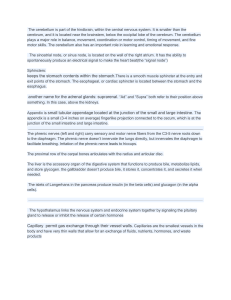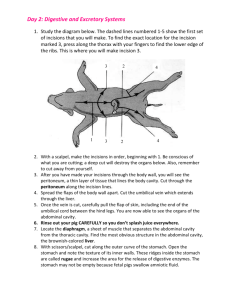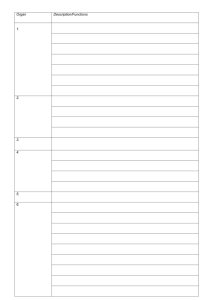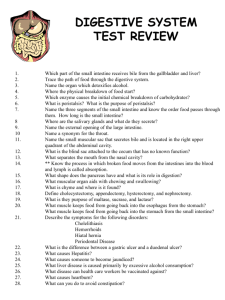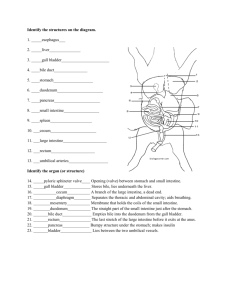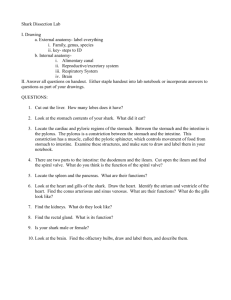DISSECTION OF THE FETAL PIG
advertisement
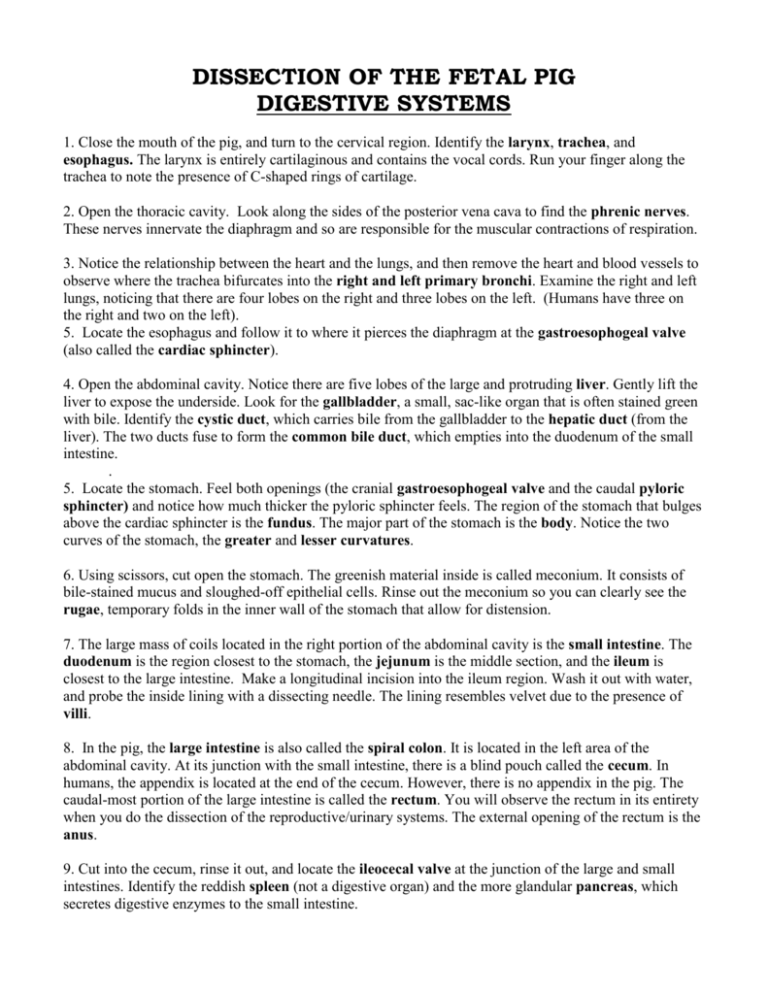
DISSECTION OF THE FETAL PIG DIGESTIVE SYSTEMS 1. Close the mouth of the pig, and turn to the cervical region. Identify the larynx, trachea, and esophagus. The larynx is entirely cartilaginous and contains the vocal cords. Run your finger along the trachea to note the presence of C-shaped rings of cartilage. 2. Open the thoracic cavity. Look along the sides of the posterior vena cava to find the phrenic nerves. These nerves innervate the diaphragm and so are responsible for the muscular contractions of respiration. 3. Notice the relationship between the heart and the lungs, and then remove the heart and blood vessels to observe where the trachea bifurcates into the right and left primary bronchi. Examine the right and left lungs, noticing that there are four lobes on the right and three lobes on the left. (Humans have three on the right and two on the left). 5. Locate the esophagus and follow it to where it pierces the diaphragm at the gastroesophogeal valve (also called the cardiac sphincter). 4. Open the abdominal cavity. Notice there are five lobes of the large and protruding liver. Gently lift the liver to expose the underside. Look for the gallbladder, a small, sac-like organ that is often stained green with bile. Identify the cystic duct, which carries bile from the gallbladder to the hepatic duct (from the liver). The two ducts fuse to form the common bile duct, which empties into the duodenum of the small intestine. . 5. Locate the stomach. Feel both openings (the cranial gastroesophogeal valve and the caudal pyloric sphincter) and notice how much thicker the pyloric sphincter feels. The region of the stomach that bulges above the cardiac sphincter is the fundus. The major part of the stomach is the body. Notice the two curves of the stomach, the greater and lesser curvatures. 6. Using scissors, cut open the stomach. The greenish material inside is called meconium. It consists of bile-stained mucus and sloughed-off epithelial cells. Rinse out the meconium so you can clearly see the rugae, temporary folds in the inner wall of the stomach that allow for distension. 7. The large mass of coils located in the right portion of the abdominal cavity is the small intestine. The duodenum is the region closest to the stomach, the jejunum is the middle section, and the ileum is closest to the large intestine. Make a longitudinal incision into the ileum region. Wash it out with water, and probe the inside lining with a dissecting needle. The lining resembles velvet due to the presence of villi. 8. In the pig, the large intestine is also called the spiral colon. It is located in the left area of the abdominal cavity. At its junction with the small intestine, there is a blind pouch called the cecum. In humans, the appendix is located at the end of the cecum. However, there is no appendix in the pig. The caudal-most portion of the large intestine is called the rectum. You will observe the rectum in its entirety when you do the dissection of the reproductive/urinary systems. The external opening of the rectum is the anus. 9. Cut into the cecum, rinse it out, and locate the ileocecal valve at the junction of the large and small intestines. Identify the reddish spleen (not a digestive organ) and the more glandular pancreas, which secretes digestive enzymes to the small intestine.


